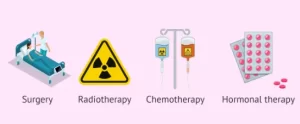Facelift surgery, also known as rhytidectomy, is a popular cosmetic procedure to rejuvenate the face and reduce visible signs of aging. It is designed to address sagging skin, deep wrinkles, and loss of facial volume, resulting in a more youthful and refreshed appearance.
How Does Face lift Surgery Work?
Face lift surgery involves the removal of excess facial skin and tightening underlying tissues to restore a firmer, smoother, and more youthful facial contour. The procedure typically targets the lower two-thirds of the face, including the jawline, cheeks, and neck. Here’s a general overview of how a face lift is performed:
- Anesthesia: The surgeon administers either local anesthesia with sedation or general anesthesia to ensure patient comfort throughout the procedure.
- Incisions: To minimize visible scarring, the surgeon carefully creates incisions in inconspicuous areas around the hairline and behind the ears.
- Tissue Repositioning: The underlying facial tissues are gently lifted and repositioned to improve facial contours and reduce sagging.
- Excess Skin Removal: Any excess skin is trimmed, and the remaining skin is redraped to create a smoother and more youthful appearance.
- Closure: The incisions are meticulously closed using sutures or other techniques to facilitate healing.
The specifics of the procedure may vary depending on the patient’s unique facial anatomy, desired outcomes, and the surgeon’s preferred techniques.
Age and Candidacy for Face lift Surgery
The ideal age for a facelift varies from person to person. Generally, individuals in their 40s to 70s seek facelift surgery to address visible signs of aging. However, it’s important to note that age is not the sole determinant of candidacy.
Side Effects of Face lift Surgery

As with any surgical procedure, facelift surgery carries potential risks and side effects. While these are typically rare and temporary, it is essential to be aware of them. Potential side effects may include:
- Swelling and Bruising: It is common to experience swelling and bruising in the treated areas, which usually subside within a few weeks.
- Pain and Discomfort: Some degree of pain and discomfort is expected during the initial recovery period, but it can be managed with prescribed medication.
- Numbness: Temporary numbness or changes in skin sensation may occur, but these typically resolve gradually over time.
- Scarring: Although efforts are made to minimize visible scarring, incision lines may be visible, but they usually fade and become less noticeable with proper healing and time.
- Infection: While rare, there is a slight risk of infection. Following post-operative care instructions and keeping the incision sites clean can help mitigate this risk.
It is crucial to discuss potential risks and side effects with your surgeon and follow their pre-and post-operative instructions to ensure a safe and successful recovery.
According to the Mayoclinic website:
You might experience temporary or permanent hair loss near the incision sites. Permanent hair loss can be addressed with surgery to transplant skin with hair follicles.

Benefits of Facelift Surgery
Facelift surgery offers numerous benefits to individuals seeking facial rejuvenation. Some of the key advantages include:
- Improved Facial Contours: A facelift restores youthful facial contours by tightening loose skin and underlying tissues, resulting in a more defined and sculpted appearance.
- Reduction of Wrinkles and Sagging: By removing excess skin and repositioning tissues, a facelift effectively reduces deep wrinkles, lines, and sagging in the lower face and neck.
- Enhanced Confidence and Self-esteem: A youthful and refreshed appearance can boost self-confidence and improve overall well-being.
- Long-lasting Results: While aging continues after a facelift, the procedure can provide long-lasting improvements, allowing individuals to enjoy their rejuvenated appearance for years.
- Natural-looking Results: Skilled surgeons strive to create natural-looking outcomes that enhance the individual’s unique features without appearing overly tight or unnatural.
- Customized Approach: Facelift surgery can be tailored to address specific concerns and desired outcomes, allowing for a personalized treatment plan.
- Complementary Procedures: A facelift restores youthful facial contours by tightening loose skin and underlying tissues, resulting in a more defined and sculpted appearance.
- Boosted Facial Symmetry: A facelift can help improve facial symmetry by correcting asymmetrical features and restoring balance to the face.
Facelift vs. Other Facial Rejuvenation Procedures
While face lift surgery is highly effective in addressing aging concerns in the lower face and neck, it is essential to consider alternative procedures for specific concerns. Here is a brief comparison of face lift surgery with other commonly performed facial rejuvenation procedures:
- Brow Lift: A brow lift targets the forehead and upper face, addressing sagging eyebrows and forehead lines. It is often performed in combination with a facelift for comprehensive rejuvenation.
- Eyelid Surgery: Also known as blepharoplasty, eyelid surgery focuses on improving the appearance of the upper and lower eyelids, reducing under-eye bags, and restoring a more youthful eye area.
- Non-surgical Options: Non-surgical treatments, such as dermal fillers and Botox injections, can help address early signs of aging, fine lines, and volume loss. While these treatments are temporary, they can be used as alternatives or in conjunction with a face lift.
It is crucial to consult with a qualified facial plastic surgeon to determine the most suitable approach for your specific concerns and goals.

Summary:
Face lift surgery offers individuals a way to address visible signs of aging and achieve a more youthful and refreshed appearance. Face lifts can significantly rejuvenate the lower face and neck by tightening sagging skin, reducing wrinkles, and enhancing facial contours.
Fun Fact: Did you know that a face lift, medically referred to as rhytidectomy, is a surgical or non-surgical method used to give your facial skin a more youthful appearance? But that’s not all!
Face lift surgery is one of the most popular forms of facial rejuvenation, targeting wrinkles and sagging skin. In contrast, non-surgical facelift options like fillers, thread lifts, or certain facial exercises offer less invasive ways to restore youthfulness.
Moreover, face lifts can sometimes indirectly stimulate collagen production, a key player in keeping our skin plump and youthful. With both direct and indirect options available, anti-aging treatments like face lifts offer a variety of ways to keep your face looking its best at any age.
FAQs:
- Is face lift surgery painful? Discomfort is expected during recovery, but pain can be managed with medication.
- What is the recovery time after a face lift? Recovery varies, but most can resume regular activities within a few weeks.



